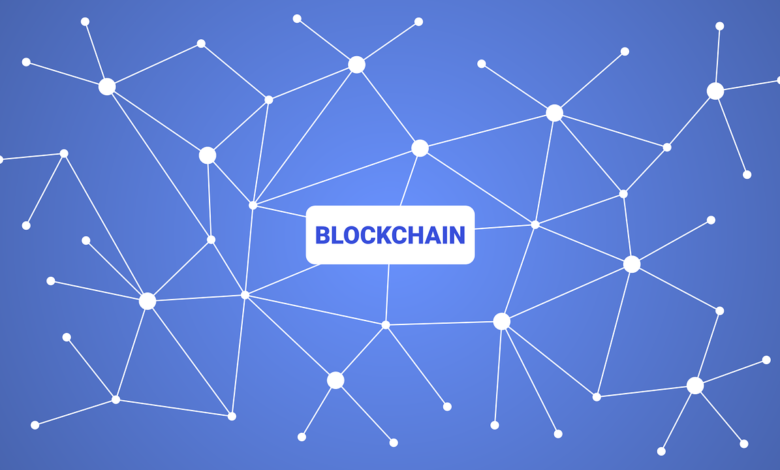Blockchain: What exactly is it?

Data Security has become an important topic of interest in recent times. Many notable databases have been compromised and user information stolen or destroyed. Corporate espionage has cost countries, financial institutions, multi-national companies, and high profile individuals a huge amount of money.
The traditional storage of data on centralized servers comes with a lot of issues. The data stored on the servers can be compromised, access to information may be lost, and updating the servers may cause difficulties for people utilizing their services.
Blockchain features a decentralized system of storing information. Its operations are transparent and the information stored on blockchain technology cannot be manipulated or tampered with.
What is Blockchain?
Blockchain is a collection of records, regarded as blocks, which are connected via cryptography or coding. Individual blocks feature a cryptographic hash of the block before it, a timestamp, and a unique transaction data.
Blockchains do not allow for manipulation of information stored on them. Transactions are transmitted between two persons effectively. The transactions can be verified and the records are permanent and cannot be altered. Blockchains ensures data security and transparency.
History of Blockchain
Blockchain was developed by an entity called Satoshi Nakamoto in 2008. It was invented to function as a transaction ledger for Bitcoin (BTC) transactions. Blockchains have numerous applications but they are popularly utilized by the various cryptocurrencies.
The size of the ledger which contains details of all the transactions on the blockchain network is now more than 200GB.
The structure of Blockchain
A Blockchain features a decentralized method of storing information. This information can be public or private. Many computers are linked through blocks, which are used to store information. A block cannot be manipulated separated. Hence transaction records on blockchains can be verified and the information provided can be trusted.
Blocks and block time
A block record a section of a transaction. The information on the transaction is encoded. individual block contains a cryptographic hash of their previous block in the chain. This ensures the integrity of the information.
Block time is the time the network used to develop another block on the chain. This is a measure of the speed of the transaction.
Principles of the Blockchain
The blockchain is based on the following principles:
• Decentralization
• Transparency
• Invariability
Decentralization
Traditional transaction systems operate on a centralized server where all the data are stored and can be accessed only in that location. This is known as the client-server system. Financial institutions, search engines, and corporate entities all utilize this system.
Decentralization eliminates the problems associated with storing information on a centralized server. Data located on a blockchain is regarded as free from manipulations and corruption.
Transparency
The privacy of transactions is a feature commonly associated with blockchain transactions. Transactions on the blockchain are transparent. However, they do not bear the names and personal information of the individual. The transaction details appear as code and can be verified and audited.
Immutability
Information entered into the blockchain cannot be manipulated. This function is made possible by the use of the cryptographic hash. Attempt to change the information stored on a block will result in a change in all the blocks.
The Blockchain Network
Blockchain functions on a peer-to-peer network. This is a collection of interconnected nodes. Rights and privileges are distributed evenly among the participants. The participants are known as peers. Each peer functions simultaneously as ‘clients’ and ‘server’. This is in contrast to the traditional client-server model network.
Uses and applications of blockchain
1. Recording transaction details.
Most cryptocurrencies are based on blockchain technology. Other financial institutions have become interested in blockchain.
2. Online voting
3. Games
The use of blockchain in the gaming industry has become popular in recent years.
4. Freedom of speech by bypassing censorship of domains by authorities
Conclusion
Blockchain ensures the integrity of data by providing an incorruptible method of transaction. Blockchain technology continues to find applications in many sectors. Currently, the major use of blockchain is in recording transactions by cryptocurrencies.





Absolutely written content material , regards for information . Vanya Job Benedix
If you want to use the photo it would also be good to check with the artist beforehand in case it is subject to copyright. Best wishes. Aaren Reggis Sela
I think this is one of the so much important information for me. Emma Lannie Andrien
Incredible points. Outstanding arguments. Keep up the amazing effort. Joanna Warde Costanzia
I am incessantly thought about this, thanks for posting.
I reckon something truly special in this website.
Some really great info, Gladiola I detected this. I’m not spaming. I’m just saying your website is AWSOME! Thank you so much! Please vist also my website.